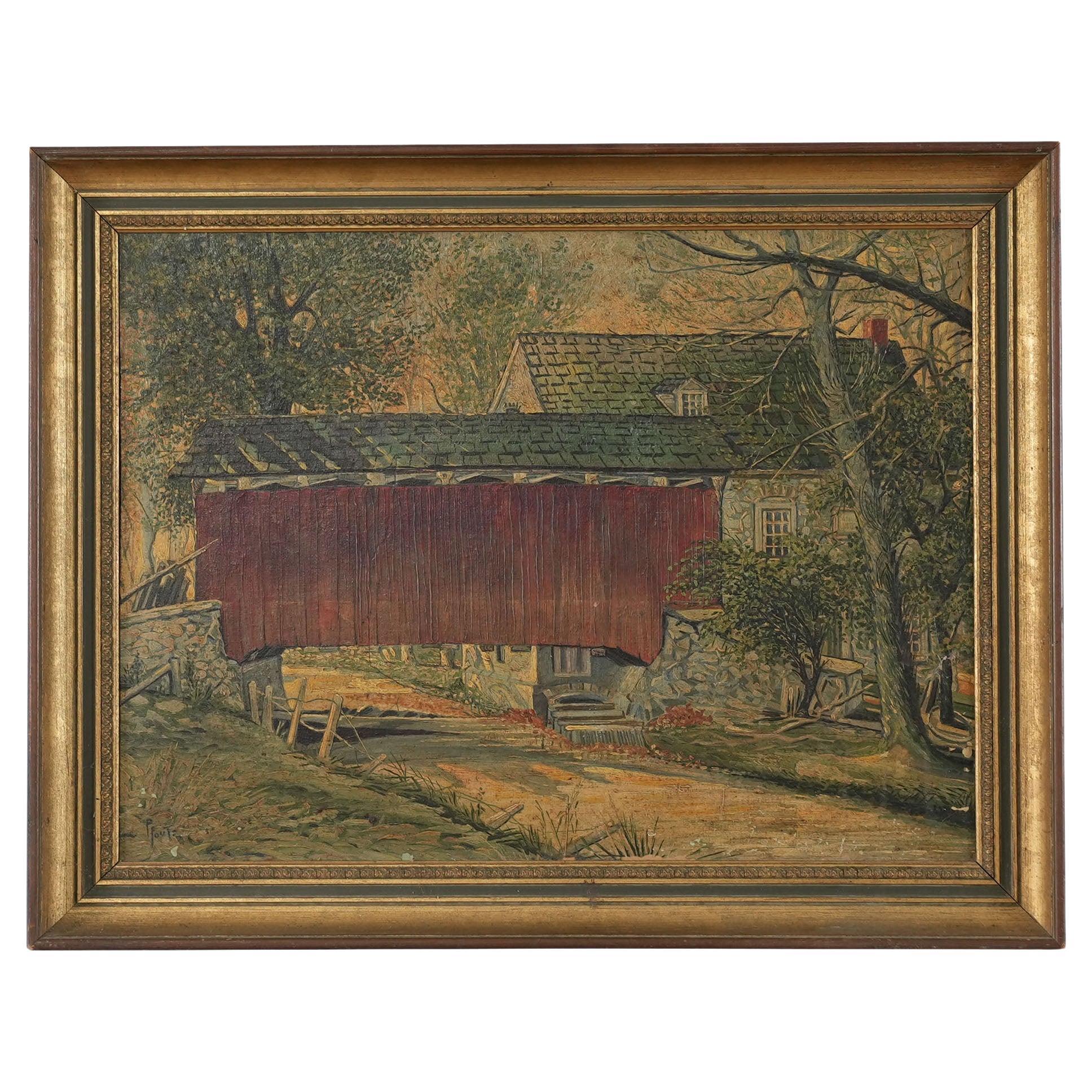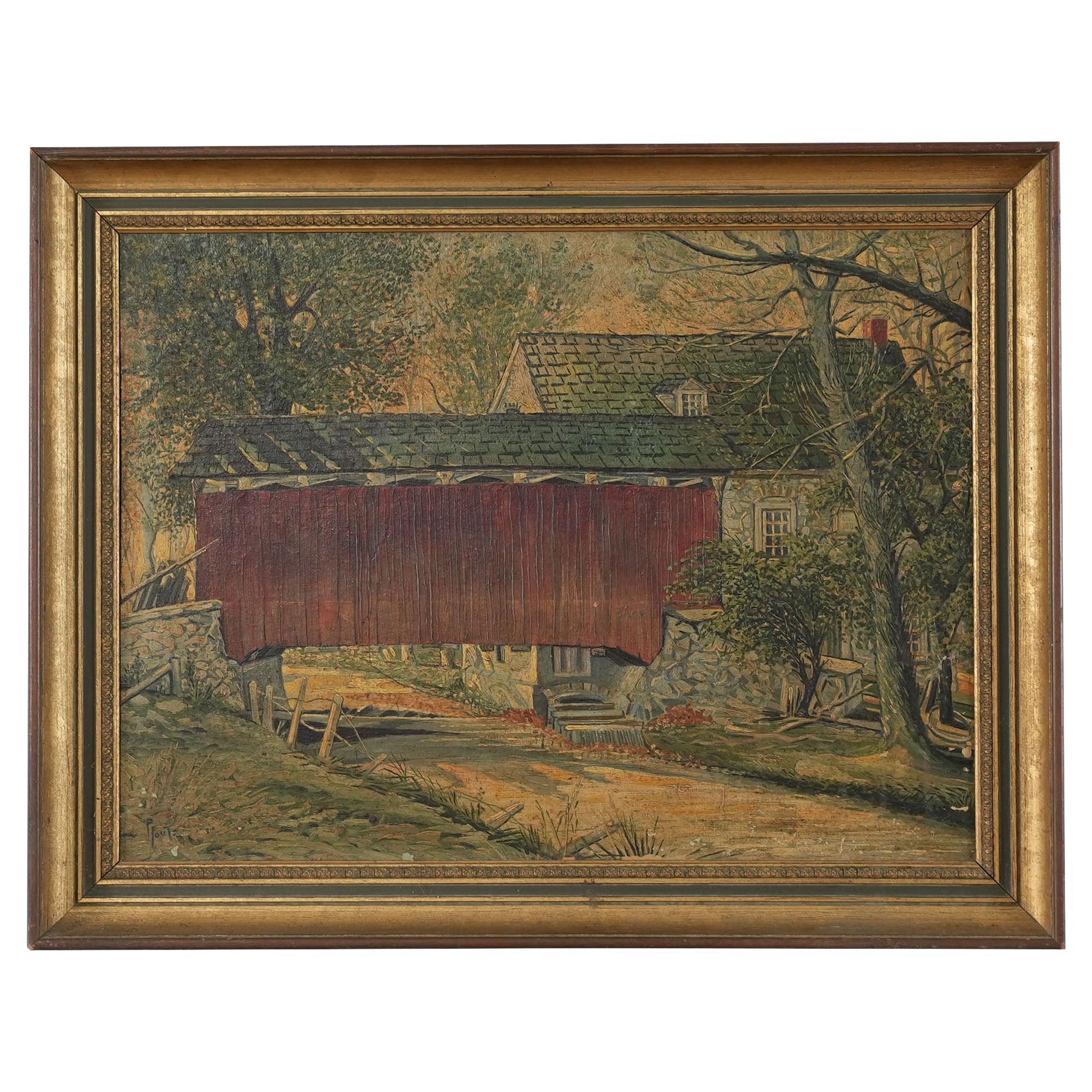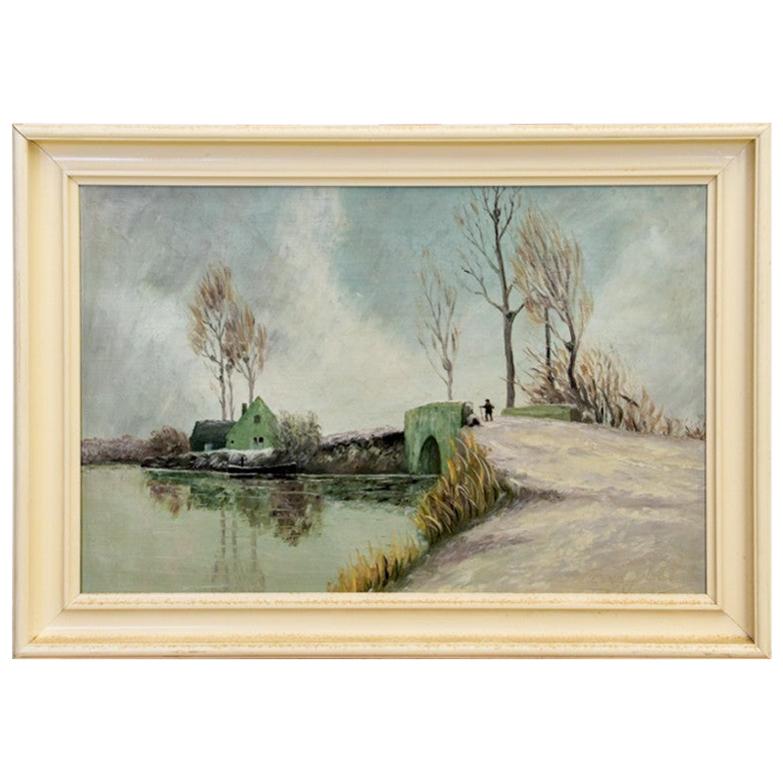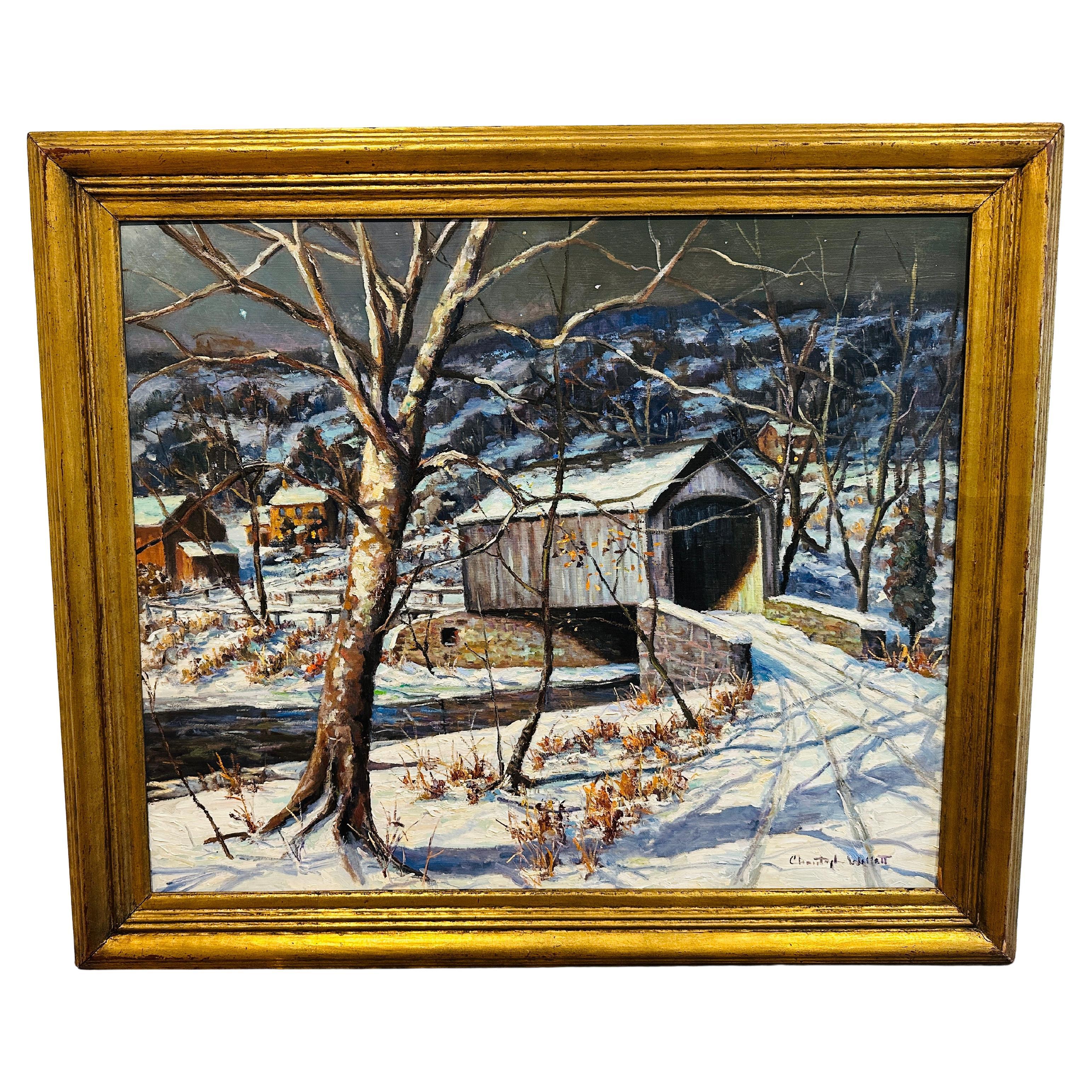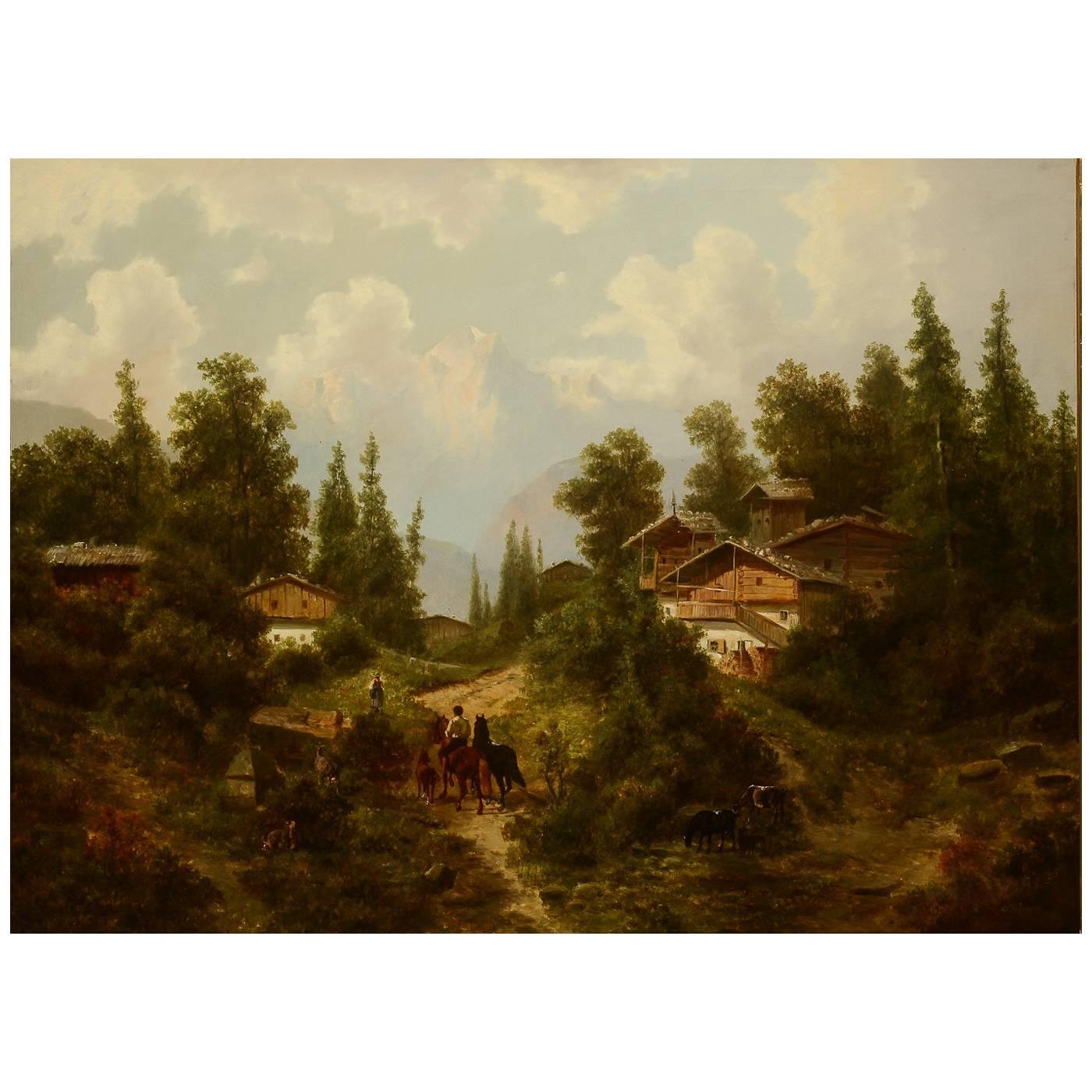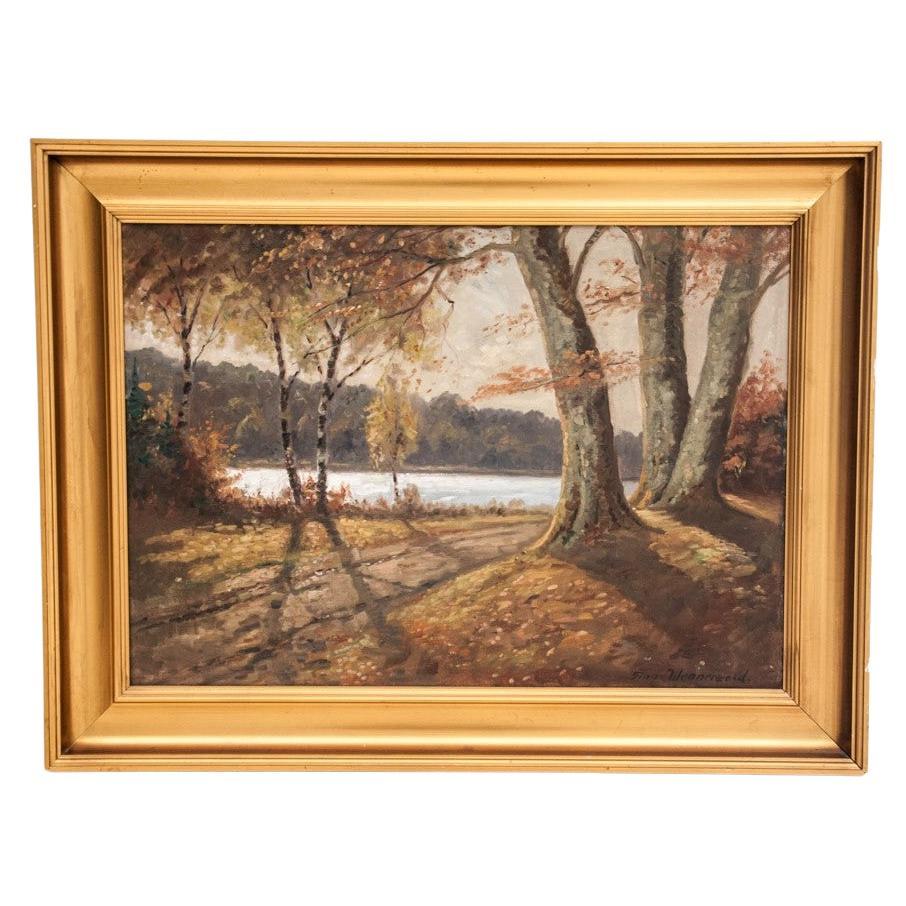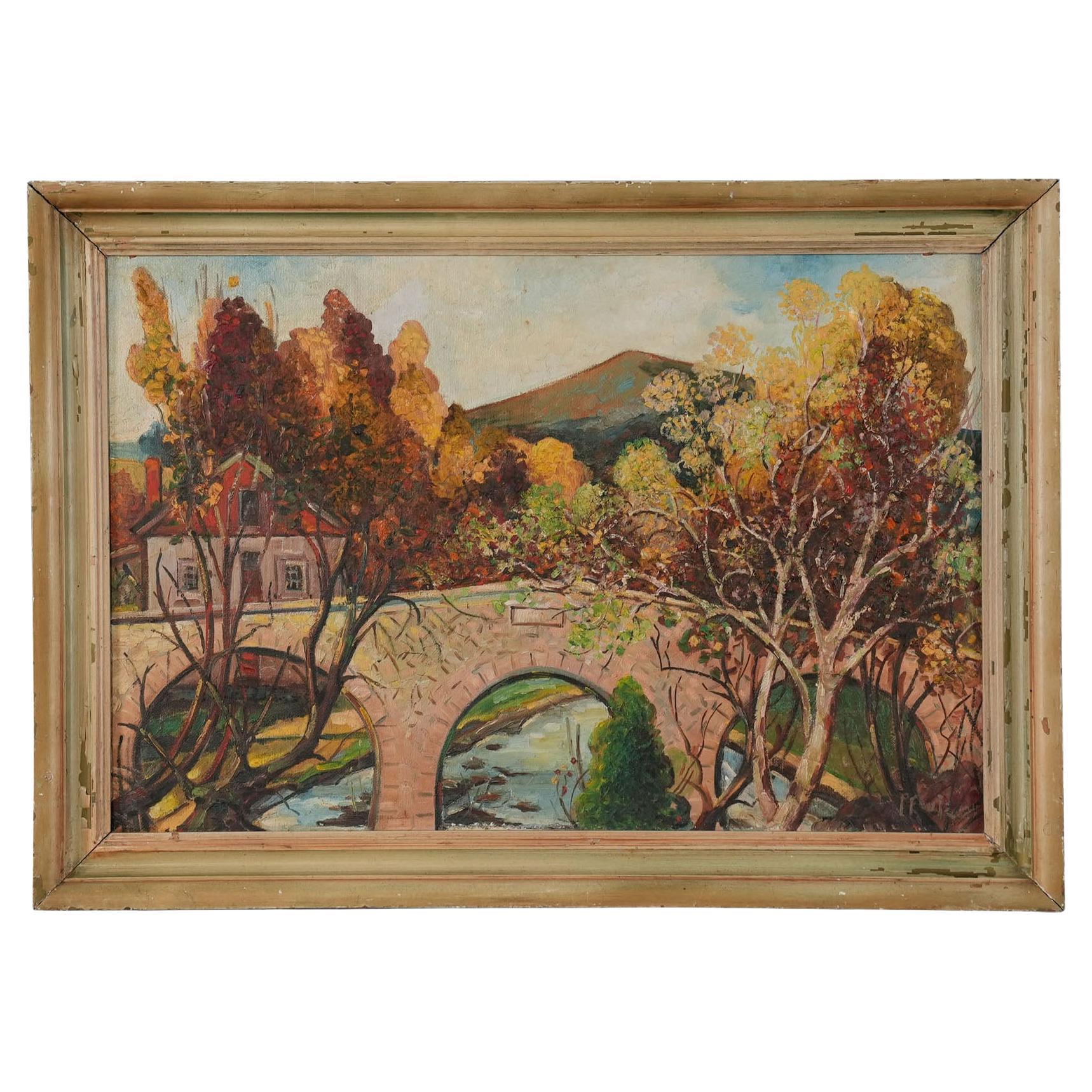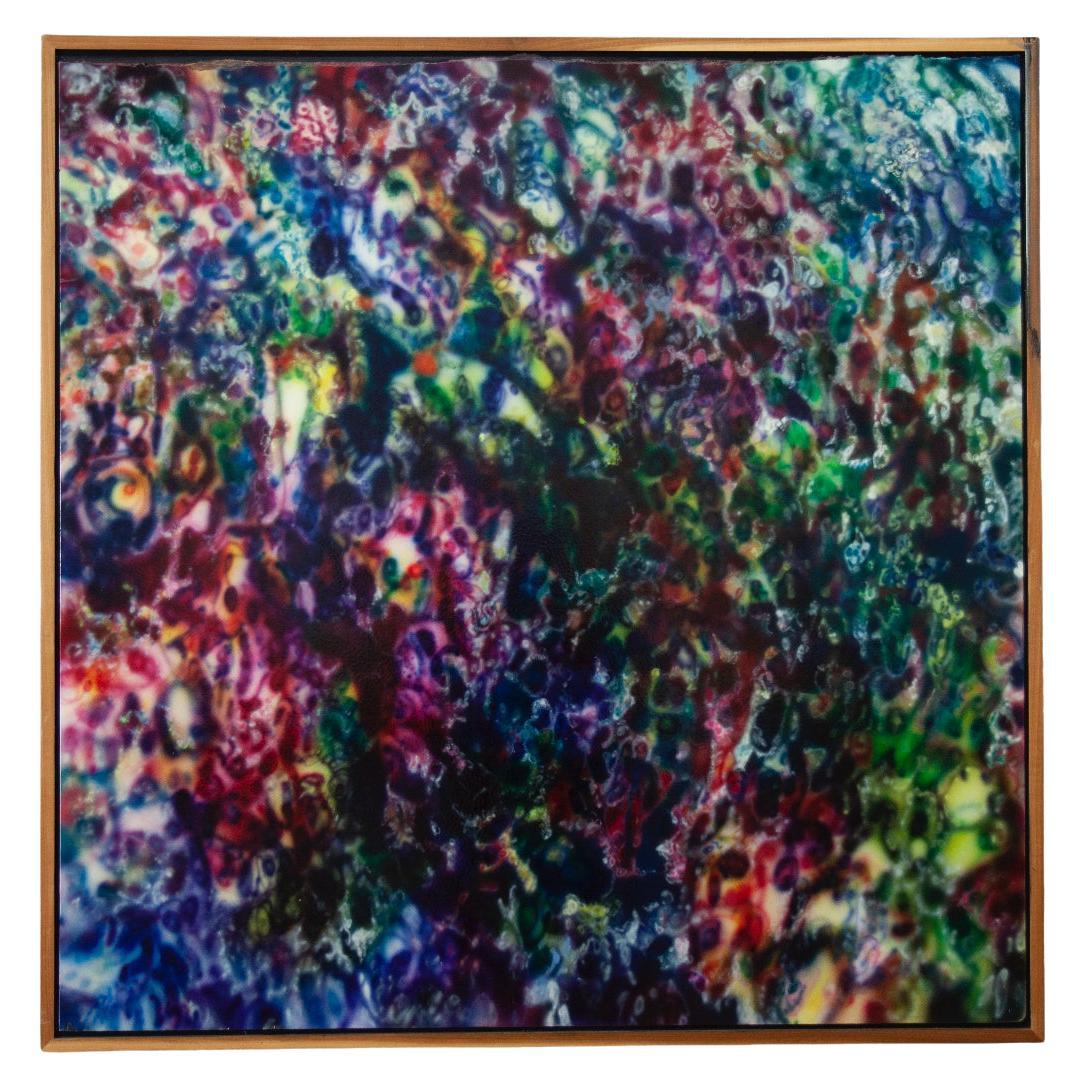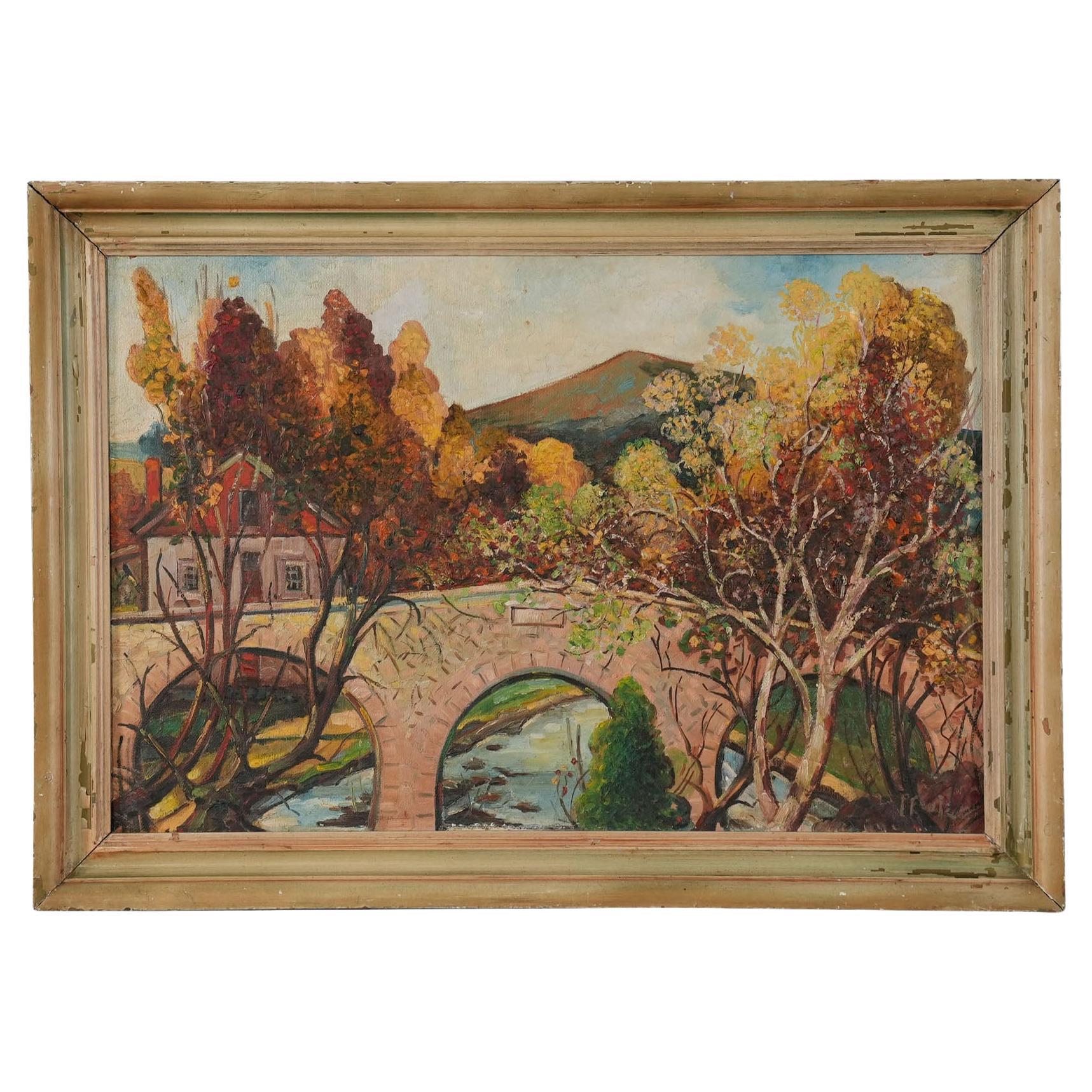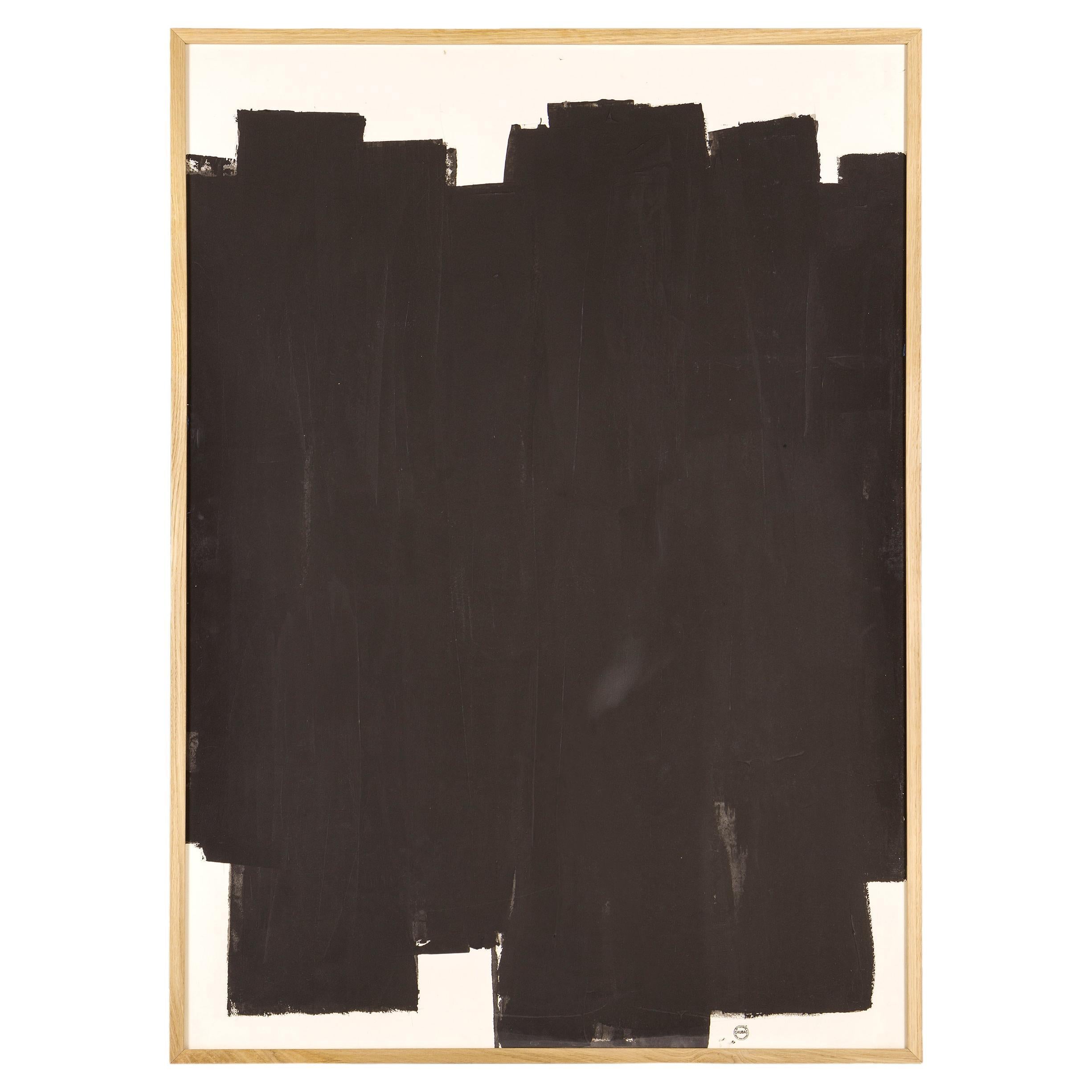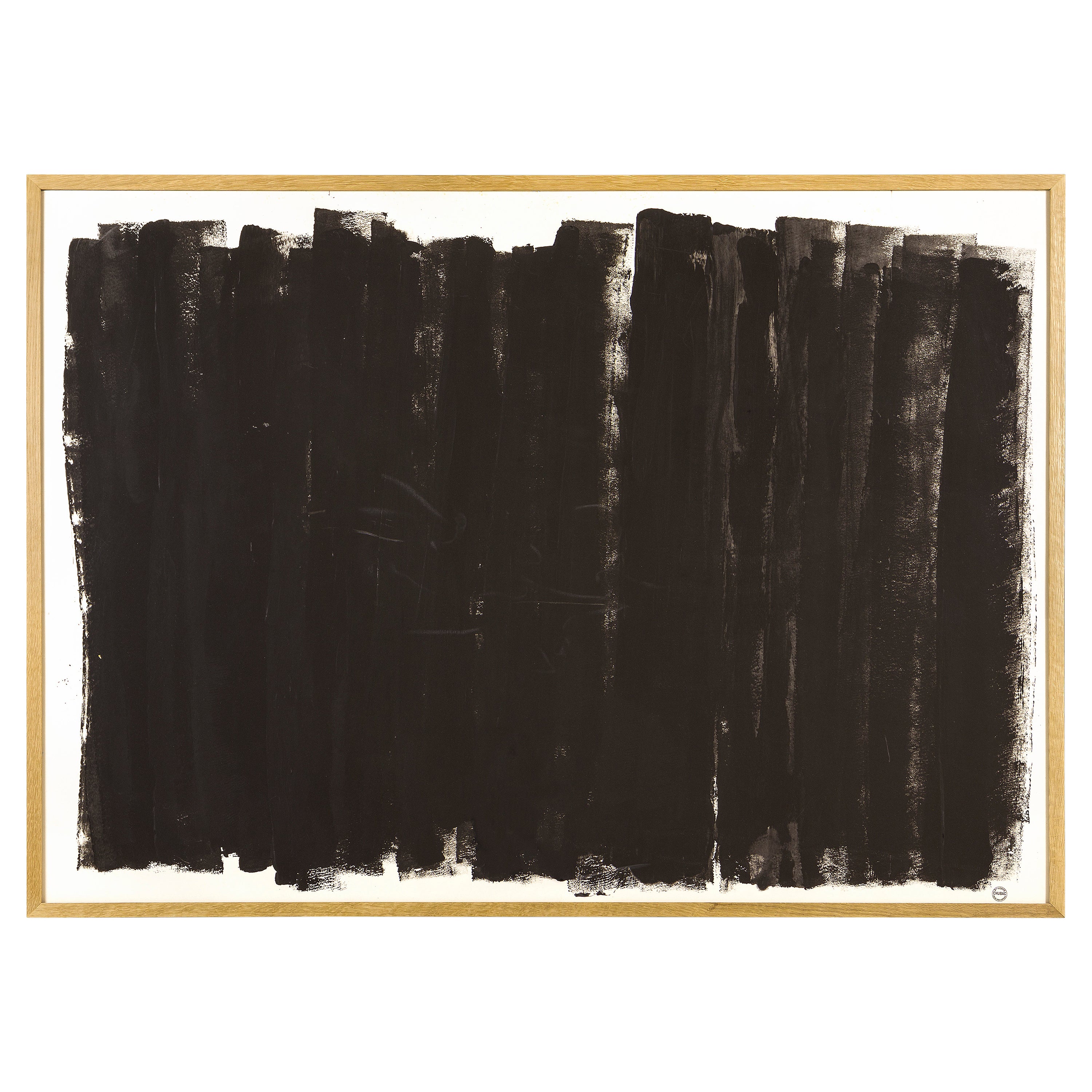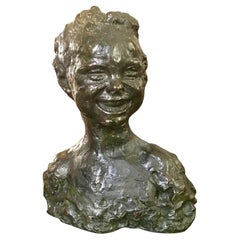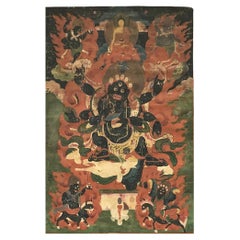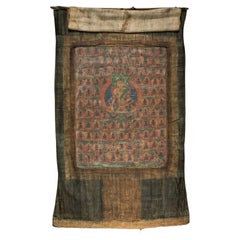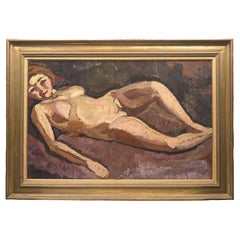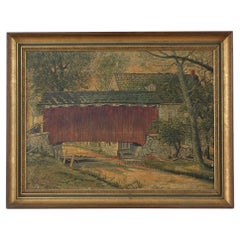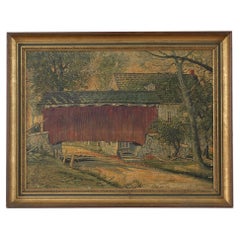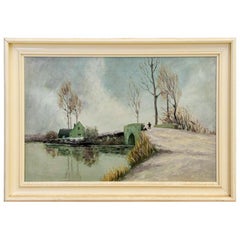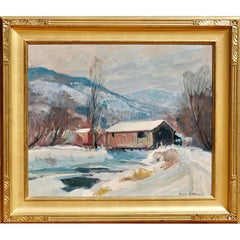
Emile Albert Gruppe 'Mass 1896-1978' “Covered Bridge” Snow Painting
View Similar Items
Want more images or videos?
Request additional images or videos from the seller
1 of 6
Emile Albert Gruppe 'Mass 1896-1978' “Covered Bridge” Snow Painting
About the Item
- Creator:Emile Albert Gruppe (Artist)
- Dimensions:Height: 33.5 in (85.09 cm)Width: 38.5 in (97.79 cm)Depth: 2 in (5.08 cm)
- Style:Adirondack (Of the Period)
- Materials and Techniques:
- Place of Origin:
- Period:
- Date of Manufacture:1945
- Condition:Wear consistent with age and use.
- Seller Location:Dallas, TX
- Reference Number:1stDibs: LU1774212439873
Emile Albert Gruppe
Emile Gruppe was an unusually prolific artist. He was at his easel almost every day and created thousands of paintings over a career that lasted 60 years. At his peak, he was completing almost 200 oil paintings a year. Yet he has never failed to find an audience for his depictions of seasonal New England or harbor scenes of Rockport and Gloucester. Gruppe was born in 1896 in Rochester, New York to an artistic family. Emile spent his youth in a fishing village in Holland, where his father, Charles Gruppe, worked as both an artist and an art dealer. Emile lived in the Netherlands until he was 17, when the family returned permanently to the United States to avoid World War I. In New York City, Gruppe attended classes at the National Academy of Design and at the Art Students League, where he studied under Charles Chapman and George Bridgman. He also studied with John Carlson in Woodstock, New York, where he gained an appreciation for outdoor painting. Carlson “turned me into a painter,” he later said. Gruppe helped found the Rockport Art Association in 1921, but he is most closely linked to Gloucester where he lived from about 1940 until his death. He operated the Gloucester School of Painting from the 1940s into the 1970s and helped turn the Rocky Neck area of East Gloucester into a world-famous art colony. The school boasted an impressive faculty but Gruppe’s own exuberant plein-air demonstrations were often the highlight of the week. Gloucester, with its fleet of whimsically painted fishing vessels, crowded wharf buildings and shacks, and picturesque inhabitants, never ceased to fascinate Gruppe. He also helped popularize Rockport’s famous fishing shack known as Motif #1, sometimes called “the most often-painted building in America.” By the 1940s, Gruppe was one of the most prominent of the Cape Ann artists, a group that included Frederick Mulhaupt, Anthony Thieme, Theresa Bernstein, Marguerite Pierson, William Lester Stevens, and Aldro Thompson Hibbard. The painters of this ‘Cape Ann School’ were some of the first U.S. artists to employ plein air painting techniques. Gruppe’s style, which tended toward Tonalism early in his career, mutated into a bold impressionism in the 1940s and 1950s. Gruppe occasionally traveled to Jeffersonville, VT where he loved to paint the picturesque country roads, farms, and forests, sometimes with distinctive white birch trees. Later in life, he wintered in Florida where he painted some tropical scenes. Though Gruppe suffered a stroke in the early 1970s, he continued to paint until his death in 1978. On the morning he died, the 82-year-old artist had stretched a canvas in preparation for a day of painting. Gruppe’s portrayals of the archetypal the houses, harbors, and rural landscape of New England have never gone out of style. His expressive impressionistic paintings continue to appeal to twenty-first-century sensibilities of a seemingly eternal New England, barely touched by modernity.
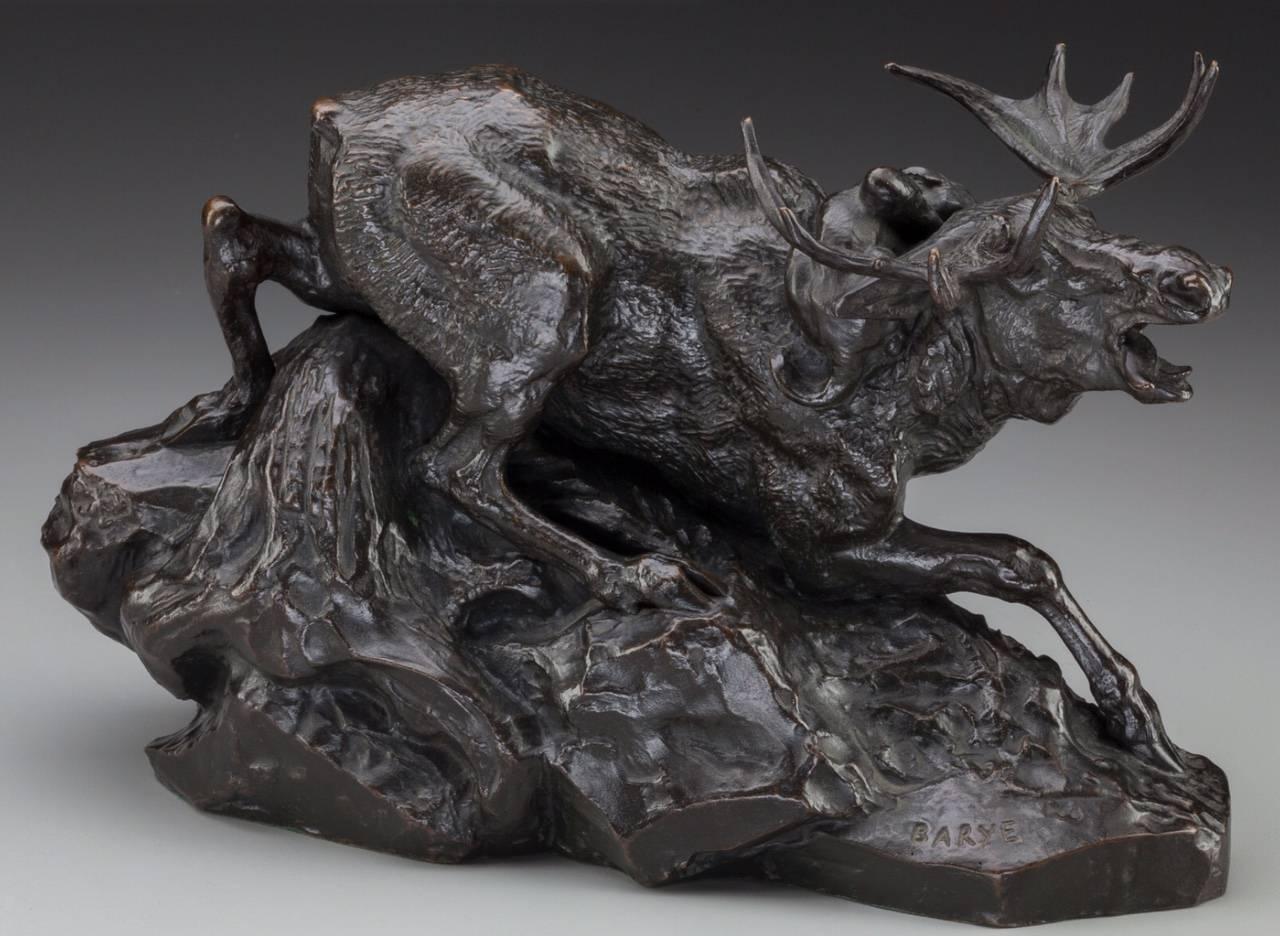
About the Seller
4.9
Gold Seller
Premium sellers maintaining a 4.3+ rating and 24-hour response times
Established in 2000
1stDibs seller since 2015
440 sales on 1stDibs
Typical response time: 1 hour
Authenticity Guarantee
In the unlikely event there’s an issue with an item’s authenticity, contact us within 1 year for a full refund. DetailsMoney-Back Guarantee
If your item is not as described, is damaged in transit, or does not arrive, contact us within 7 days for a full refund. Details24-Hour Cancellation
You have a 24-hour grace period in which to reconsider your purchase, with no questions asked.Vetted Professional Sellers
Our world-class sellers must adhere to strict standards for service and quality, maintaining the integrity of our listings.Price-Match Guarantee
If you find that a seller listed the same item for a lower price elsewhere, we’ll match it.Trusted Global Delivery
Our best-in-class carrier network provides specialized shipping options worldwide, including custom delivery.More From This Seller
View AllEmile Antoine Bourdelle Enfan
By Émile Antoine Bourdelle
Located in Dallas, TX
Emile Antoine Bourdelle (French, 1861-1929) Bronze Sculpture
Bronze brutalist bust titled Enfant Riant (Laughing Child) Most probably modeled by his daughter; Rhodia. Bourdelle was...
Category
Vintage 1910s French Figurative Sculptures
Materials
Bronze
18th-19th Century Tibetan Thanka
Located in Dallas, TX
Tibetan Buddhist thangka from the late 18th early 19th century.
Distemper on cloth (either silk or cotton)
Depicting a Buddhist deity with multi arms and Buddhist religious relics ...
Category
Antique Early 19th Century Tibetan Tibetan Paintings
Materials
Paint
18th Century Tibetan Thangka Of Amitayus Buddha
Located in Dallas, TX
A THANGKA DEPICTING AMITAYUS, 18TH CENTURY
Tibet. Distemper on cloth, with a silk brocade frame, mounted as a hanging scroll with wood handles. Finely painted with Amitayus seated i...
Category
Antique Mid-18th Century Tibetan Tibetan Paintings
Materials
Silk
$4,550 Sale Price
30% Off
Roger de la Fresnaye (French, 1885-1925) - Femme Nue Couchée
Located in Dallas, TX
Roger de la Fresnaye (French, 1885-1925) - Femme Nue Couchée
Monumental 90% life size nude model painting executed during the zenith and birth of cubism and expressionism.
Oil on ...
Category
Vintage 1910s French Expressionist Paintings
Materials
Paint
Important Louis Icart Hand Colored Lithograph COA
By Louis Icart
Located in Dallas, TX
Louis Icart (French, 1888-1950) Dessin des Femmes, circa 1928
Hand-colored lithograph on paper of a nude female back side.
Sheet: 17.5 x 13-1/2 inches...
Category
Vintage 1920s French Art Deco Paintings
Materials
Paper
Emile Galle Red Cameo Vase
By Émile Gallé
Located in Dallas, TX
Emile Gallé Art Nouveau Acid etched and cameo three color glass vase. Rose flowers are window pained and let delicate lights waves through in a translucent effect, This is a rather l...
Category
Antique Early 1900s Art Nouveau Vases
Materials
Art Glass
You May Also Like
Lancaster Covered Bridge Original Oil Painting
Located in Annville, PA
A very interesting and unusual Lancaster Covered Bridge Original Oil Painting by artist J. Earle Pfoutz. The painting is produced on artist board and comes complete with what appears to be an original artist decorated/painted frame. The painting is signed on the front by the artist and is dated 1936 on the rear.
Overall frame Size approximately 28″ wide x 2″ deep x 22″ high
J. Earle Pfoutz had a long and distinguished career as a self trained artist. More can be learned about him from reading this article produced by Gary Hawbaker at askART
Earle Pfoutz Born: 1891 – Lancaster, Pennsylvania
Died: 1957
Known for: Landscape, figure, still life painting
An image of J Earle Pfoutz
Biography from the Archives of askART
J. Earle Pfoutz (John Earle Pfoutz) – (Oct 23, 1891-Nov 9, 1957)
“A seventh generation descendant of a Swiss family which arrived in America early in the 17th Century, J. Earle Pfoutz was born in Lancaster, PA, son of John Bachman and Susan Allison Pfoutz. He painted houses for a living and pictures for a life.
A self-taught artist, described as a primitive, he was distinctive for his vivid imagination and bold color application. He painted hundreds of Lancaster County scenes. Pfoutz traveled through the hills near his home and along the Susquehanna River in search of scenes. He began painting with a brush when he was fourteen, but added a palette knife after suffering an eye injury. He completed eighth grade in the Lancaster Public Schools and there his formal education ended. However, the Department of Public Instruction of the State of Pennsylvania thought so highly of his work as an artist that officials certified him as an art instructor and he taught for a year in the York (PA) public schools. He also was an art instructor under the program for disabled veterans, sponsored by the Veterans Administration, when he gave private instruction to veterans in their homes.
In 1947, J. Earle Pfoutz finally earned national recognition as an artist. His painting, Opalescent October, was chosen by the Museum of Art of Dayton Ohio, to travel all over the country for a year with its Group Exhibition. Described as a “very colorful, calm scene, iridescent in color, sweeping in design,” the painting started on its journey around the country early in 1948. In an interview with the Sunday News (Lancaster, PA – Nov 2, 1947), Pfoutz stated that he didn’t know whether he was a “primitive” or an “impressionist.” No master taught him, no school channeled his style. “Sometimes I didn’t eat, but I always managed to paint,” he recalled. Many of his hundreds of canvases -most of them not sold, but given away to friends – found their way to other parts of the country. “I never remember the day when I did not love color,” Pfoutz said. “I was about 12 years old when I saw my first palette – a string of different colored paint paddles that graced the stores of that day. As a boy I had two great desires. One was to be able to eat all the strawberry jam I could, and the other to possess a string of those beautiful paint paddles. Well, I’ve got my fill of jelly, but I’ve never yet got my fill of beautiful colors.”
In 1950, Pfoutz’s one man show of paintings made front page headlines in the Lancaster Intelligencer Journal: “Most of the twenty oil paintings on exhibition are landscapes, although there are several interesting figure studies. Colors again, as in all Pfoutziana are rich and full-bodied, but for the most part not as startlingly as in some of the earlier work. Most of the paintings were done during the past year, and also reveal the painter’s characteristic heavy impasto technique, in which the rich swirls of paint carry their own message. Among the figures, The Banjo Picker, and The Magician, are the most provocative. Both are character studies; the first being of a tramp musician whose drab clothing is set-off by a luminous aqua blue background. Modern in feeling and treatment is The Magician, a clown-faced wizard whose spinning ball in the air suggests the fourth dimension – space. The use of the primary colors in this picture serves to emphasize the theme effectively.
A large colorful landscape, Opalescent October, depicting rolling hills against a late afternoon sky is new to Lancastrians, as it has just returned from Dayton, Ohio, where it hung in the Dayton Art Institute. Another landscape with soft dreamy colors is Fantasie D’Autumne, and one of the loveliest pictures in the show. Pennsylvania Dutch Country is another with eye appeal, and was one of the works which was hung in the Old Customs House in Philadelphia during Pennsylvania Week, and before that in a collection of Pfoutz work in the same place. In deep contrast to the sunny skies and brilliant foliage of many of the pictures, is the somewhat morbid Worry, in which the center of interest is a tremendous rat. This, the painter explains, was symbolic of 1948 in China, which was ‘The Year of The Rat’ in the Chinese calendar. Background material for the picture was furnished to Pfoutz by author Pearl Buck.
Other pictures include Autumn Prelude, Miners Village, painted at Cornwall, PA; Humid Day, Saint Peters Kierch, at Middletown, PA; Lady Pfoutz, inspired by the painter’s wife; Sun Flowers, Sentimental Journey, Gyne, Luzon Woman, Old Bridge, The Cow Path. Lemures, based on Roman mythology, and Ethiopian, painted from an ebony wood carving...
Category
Early 20th Century North American Paintings
Materials
Canvas, Paint
Lancaster Covered Bridge Original Oil Painting
Located in Annville, PA
A very interesting and unusual Lancaster Covered Bridge Original Oil Painting by artist J. Earle Pfoutz. The painting is produced on artist board and comes complete with what appears to be an original artist decorated/painted frame. The painting is signed on the front by the artist and is dated 1936 on the rear.
Overall frame Size approximately 28″ wide x 2″ deep x 22″ high
J. Earle Pfoutz had a long and distinguished career as a self trained artist. More can be learned about him from reading this article produced by Gary Hawbaker at askART
Earle Pfoutz Born: 1891 – Lancaster, Pennsylvania
Died: 1957
Known for: Landscape, figure, still life painting
An image of J Earle Pfoutz
Biography from the Archives of askART
J. Earle Pfoutz (John Earle Pfoutz) – (Oct 23, 1891-Nov 9, 1957)
“A seventh generation descendant of a Swiss family which arrived in America early in the 17th Century, J. Earle Pfoutz was born in Lancaster, PA, son of John Bachman and Susan Allison Pfoutz. He painted houses for a living and pictures for a life.
A self-taught artist, described as a primitive, he was distinctive for his vivid imagination and bold color application. He painted hundreds of Lancaster County scenes. Pfoutz traveled through the hills near his home and along the Susquehanna River in search of scenes. He began painting with a brush when he was fourteen, but added a palette knife after suffering an eye injury. He completed eighth grade in the Lancaster Public Schools and there his formal education ended. However, the Department of Public Instruction of the State of Pennsylvania thought so highly of his work as an artist that officials certified him as an art instructor and he taught for a year in the York (PA) public schools. He also was an art instructor under the program for disabled veterans, sponsored by the Veterans Administration, when he gave private instruction to veterans in their homes.
In 1947, J. Earle Pfoutz finally earned national recognition as an artist. His painting, Opalescent October, was chosen by the Museum of Art of Dayton Ohio, to travel all over the country for a year with its Group Exhibition. Described as a “very colorful, calm scene, iridescent in color, sweeping in design,” the painting started on its journey around the country early in 1948. In an interview with the Sunday News (Lancaster, PA – Nov 2, 1947), Pfoutz stated that he didn’t know whether he was a “primitive” or an “impressionist.” No master taught him, no school channeled his style. “Sometimes I didn’t eat, but I always managed to paint,” he recalled. Many of his hundreds of canvases -most of them not sold, but given away to friends – found their way to other parts of the country. “I never remember the day when I did not love color,” Pfoutz said. “I was about 12 years old when I saw my first palette – a string of different colored paint paddles that graced the stores of that day. As a boy I had two great desires. One was to be able to eat all the strawberry jam I could, and the other to possess a string of those beautiful paint paddles. Well, I’ve got my fill of jelly, but I’ve never yet got my fill of beautiful colors.”
In 1950, Pfoutz’s one man show of paintings made front page headlines in the Lancaster Intelligencer Journal: “Most of the twenty oil paintings on exhibition are landscapes, although there are several interesting figure studies. Colors again, as in all Pfoutziana are rich and full-bodied, but for the most part not as startlingly as in some of the earlier work. Most of the paintings were done during the past year, and also reveal the painter’s characteristic heavy impasto technique, in which the rich swirls of paint carry their own message. Among the figures, The Banjo Picker, and The Magician, are the most provocative. Both are character studies; the first being of a tramp musician whose drab clothing is set-off by a luminous aqua blue background. Modern in feeling and treatment is The Magician, a clown-faced wizard whose spinning ball in the air suggests the fourth dimension – space. The use of the primary colors in this picture serves to emphasize the theme effectively.
A large colorful landscape, Opalescent October, depicting rolling hills against a late afternoon sky is new to Lancastrians, as it has just returned from Dayton, Ohio, where it hung in the Dayton Art Institute. Another landscape with soft dreamy colors is Fantasie D’Autumne, and one of the loveliest pictures in the show. Pennsylvania Dutch Country is another with eye appeal, and was one of the works which was hung in the Old Customs House in Philadelphia during Pennsylvania Week, and before that in a collection of Pfoutz work in the same place. In deep contrast to the sunny skies and brilliant foliage of many of the pictures, is the somewhat morbid Worry, in which the center of interest is a tremendous rat. This, the painter explains, was symbolic of 1948 in China, which was ‘The Year of The Rat’ in the Chinese calendar. Background material for the picture was furnished to Pfoutz by author Pearl Buck.
Other pictures include Autumn Prelude, Miners Village, painted at Cornwall, PA; Humid Day, Saint Peters Kierch, at Middletown, PA; Lady Pfoutz, inspired by the painter’s wife; Sun Flowers, Sentimental Journey, Gyne, Luzon Woman, Old Bridge, The Cow Path. Lemures, based on Roman mythology, and Ethiopian, painted from an ebony wood carving from Kenya Province, S. Africa.”
In 1953, Pfoutz was installed as President of the Lancaster County Art Association. A. Z. Kruse, New York City artist, writer and member of the faculty of the Brooklyn College and the Cartoonists and Illustrators School, Manhattan, was the guest speaker. In January of 1953, thirty-five Pfoutz oils were exhibited at the Old Custom House in Philadelphia, PA under the sponsorship of the Carl Schurz Memorial Foundation. Several Lancaster County landscapes and covered bridges were included as well as Katy, a Pennsylvania Dutch scene. Symbolic paintings included End of the Second Day, the artist’s visualization of the second coming of Christ, and Twilight, typifying the grief of mothers of all lands for sons lost in battle.
In June of 1953, a Pfoutz oil made history in Lancaster. From the Lancaster New Era: “For the first in local art history, a painting has been withdrawn from an exhibition because of objections from viewers and hostesses serving at the show. The painting, Jeune Fille, a standing nude done by Pfoutz, was one of the paintings in the annual spring exhibition of the Art Association and had become the center of the controversy. Pfoutz said he took the painting down… ‘graciously but reluctantly.’ ‘From an artistic standpoint, there is nothing offensive about the painting,’ Pfoutz said. ‘This community just wants its nudes with clothes on.’ “It is most brilliant in color, and because it is so brilliant I thought it would make a nice lively spot for the show. This is the first time I’ve had to take a picture off the walls. I substituted a seascape for it.’ Pfoutz said he felt the painting brought a lot of viewers to the show because it was so controversial. It had never been exhibited before. ‘If this had been shown in a metropolitan city,’ he commented, ‘people wouldn’t have given it a second glance. But the viewpoint here is more conservative, even though I don’t think moderns would have minded.’ He said he felt the painting was neither ‘objectionable nor pornographic,’ but had complied with the wishes of fellow members of the Art Association who telephoned him to relay the protests they had received. The art controversy was the first to arise here publicly since the showing of Amish Grandmother, an oil by William Gropper which was part of the Gimbel Pennsylvania exhibit at the Griest Building several years ago. — Numerous viewers of Amish Grandmother, [a painting showing an Amish woman holding a white goose], expressed themselves quite vocally, calling it an affront to the Plain Folk. But it stayed on exhibit throughout the length of the Gimbel show. Pfoutz expressed no rancor, implying that if Gropper could take it so could he.”
After his death, there were several shows of Pfoutz’ work organized by his son J. Earle, Jr. J. Earle, Jr. also saw to it that President Eisenhower would receive an oil called The Cow’s Path. The president first saw the painting in 1950 when, as president of Columbia University, he visited Lancaster to address a student assembly at Franklin and Marshall College. After his address was over, the then Gen. Eisenhower stopped at the Fackenthal Library on the campus to view an exhibition of Pfoutz’s paintings. The Cow’s Path intrigued him. For some time, as his aides fumed to get him back on his time schedule, Eisenhower and Pfoutz talked, as artist to artist. Prior to his death, Pfoutz requested that The Cow’s Path be given to the President if he wanted it. The painting was presented to Ike at the White House in November of 1959. Mrs. Eisenhower owned a Pfoutz painting titled, In the Manor.
Though house painting was his livelihood, he worked for Millersville State Teachers College (now a university) for a time during World War II, and called himself “the Chimney Sweep of MSTC.” During that period he knocked out a dizzying canvas in the surrealist style (he thought it was terrible) and got into the campus newspaper when one of the students spotted it.
Earle Pfoutz was not the humble, downtrodden artist, not the Douanier Rousseau type at all. As he developed his skill and style through the years, he also fashioned a resilient confidence in himself as an artist. Whether he was building his own home (he built two) or painting one for somebody else, he never lost faith in his ultimate recognition—though he was never sure he would live to see it.
Whether he was working as a rigger for a hoisting company, in the Stehli Silk Mill of Lancaster, carving Cloister-style chairs, decorating old chests, cementing bricks from the old Safe...
Category
Vintage 1940s American Paintings
Materials
Paint
Painting "Snow-Covered Road", Scandinavia, Early 20th Century
Located in Chorzów, PL
The painting "Snow-covered road", Scandinavia, early 20th century.
Dimensions with frame: 49 x 35 cm
Dimensions without frame: 41 x 28 cm.
Category
Vintage 1930s Danish Mid-Century Modern Paintings
Materials
Canvas
$185 Sale Price
20% Off
Cabin Run Covered Bridge Bucks County Pennsylvania Impressionist Oil Painting
By Christopher Willett
Located in Philadelphia, PA
Impressionist Bucks County - Winter is here and the calmness of night is approaching. A covered bridge gently perched above a lively stream with banks of fresh snow. The ground is co...
Category
Late 20th Century American Classical Paintings
Materials
Canvas, Paint
Albert Lang Oil Painting
Located in Vienna, AT
Albert Lang 1847-1933. Southern European landscape with houses, forest, riders and animals. Oil on canvas signed A. Lang. Measures: 74 x 100 (107 x 134) cm...
Category
Antique 1890s German Paintings
Materials
Canvas
$2,989
Painting "Autumn landscape" Finn Wennerwald (1896-1969)
Located in Chorzów, PL
PAINTING "Autumn landscape"
Author - Danish painter Finn Wennerwald (1896-1969)
Oil on a wooden board.
dimensions:
Frame: height 61 cm; width 80.5 cm depth 5 cm
Image: height 46...
Category
Vintage 1950s Danish Other Paintings
Materials
Canvas
$324 Sale Price
20% Off
